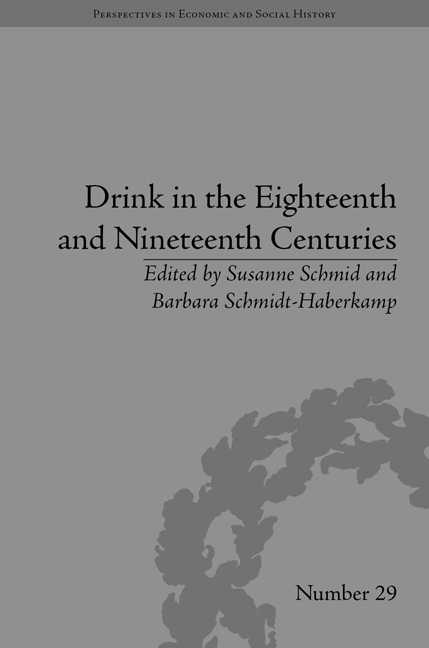Book contents
- Frontmatter
- CONTENTS
- Acknowledgements
- List of Contributors
- List of Figures and Tables
- Introduction
- Part I Ritual and Material Culture
- Part II Institutions and Social Class
- Part III Temperance and the Misery of Alcohol
- Part IV Intoxication and Therapy
- 9 Alcohol, Sympathy and Ideology in George Gissing's The Nether World (1889) and The Odd Women (1893)
- 10 Legends of Infernal Drinkers: Representations of Alcohol in Thomas Hardy and Nineteenth-Century British Fiction
- 11 The Spirit of Medicine: The Use of Alcohol in Nineteenth-Century Medical Practice
- Part V Case Studies: Rum, Cocoa and Magical Potions
- Notes
- Index
10 - Legends of Infernal Drinkers: Representations of Alcohol in Thomas Hardy and Nineteenth-Century British Fiction
from Part IV - Intoxication and Therapy
- Frontmatter
- CONTENTS
- Acknowledgements
- List of Contributors
- List of Figures and Tables
- Introduction
- Part I Ritual and Material Culture
- Part II Institutions and Social Class
- Part III Temperance and the Misery of Alcohol
- Part IV Intoxication and Therapy
- 9 Alcohol, Sympathy and Ideology in George Gissing's The Nether World (1889) and The Odd Women (1893)
- 10 Legends of Infernal Drinkers: Representations of Alcohol in Thomas Hardy and Nineteenth-Century British Fiction
- 11 The Spirit of Medicine: The Use of Alcohol in Nineteenth-Century Medical Practice
- Part V Case Studies: Rum, Cocoa and Magical Potions
- Notes
- Index
Summary
I
It is certainly a commonplace of cultural criticism to maintain that the nineteenth century was wary of most bodily pleasures. The Victorians' eating habits and their extreme reactions to food have been well documented, but what tends to escape critical notice is the fact that representations of drinking were no less ambivalent at that time. A history of drinking in the nineteenth century, which still has to be written, should surely start with John Keats's sensual references to drinking as a source of inspiration in the ‘Ode to a Nightingale’ (1819). What, with its /b/-alliterations, looks like a eulogy of sparkling southern wine and, with its manifold synaesthetic implications, is only meant to serve the poet as a trajectory to leave the world, his body and all sensational stimuli behind:
Oh, for a beaker full of the warm South,
Full of the true, the blushful Hippocrene,
With beaded bubbles winking at the brim,
And purple-stainèd mouth,
That I might drink, and leave the world unseen,
And with thee [the nightingale] fade away into the forest dim –
No sooner has Keats conjured up the image of red wine and its associations with Pegasus and the Muses than he discards it in the subsequent stanza and decides to replace Bacchus, the ‘pards’ and their connotations of riotous drinking with the promises of ‘the viewless wings of Poesy’.
- Type
- Chapter
- Information
- Drink in the Eighteenth and Nineteenth Centuries , pp. 115 - 126Publisher: Pickering & ChattoFirst published in: 2014

